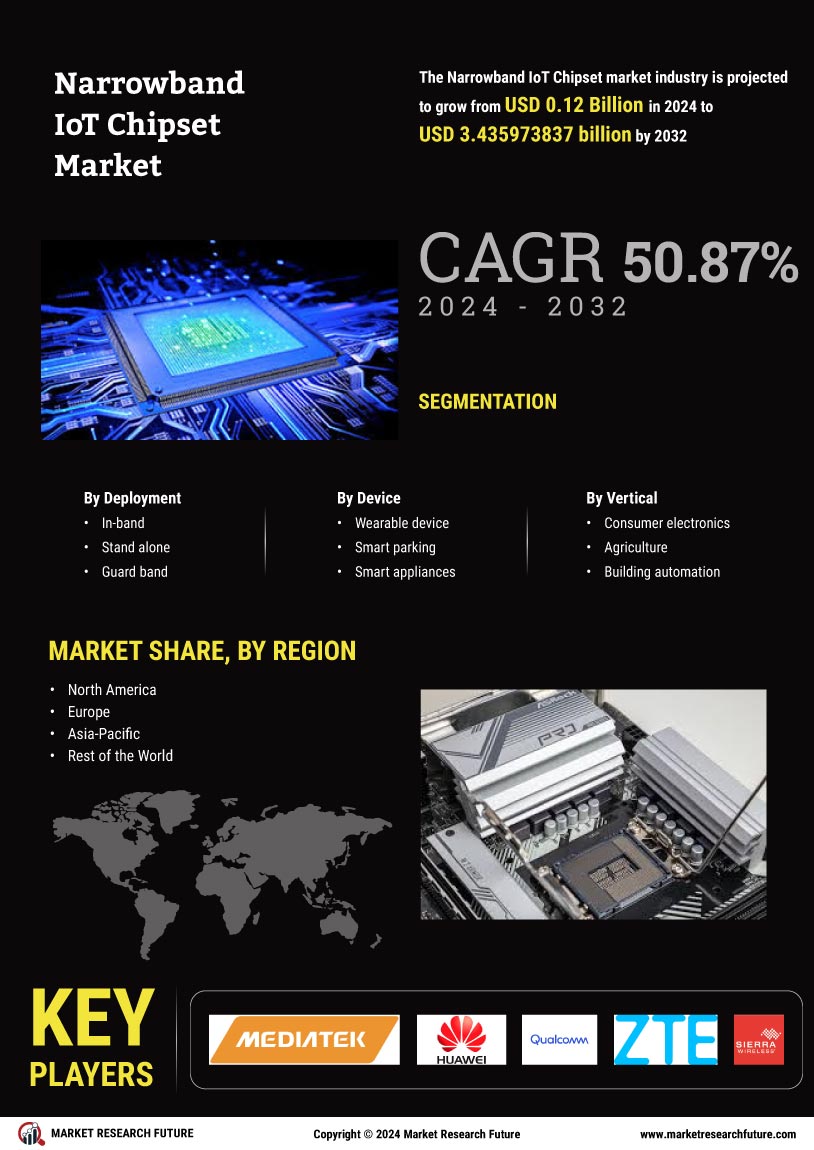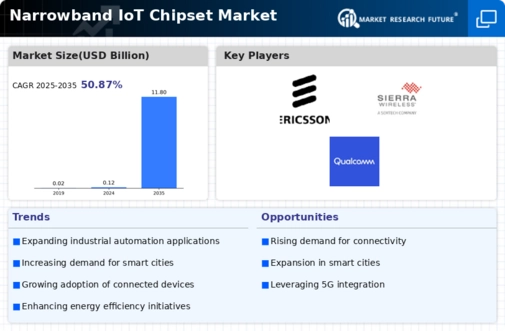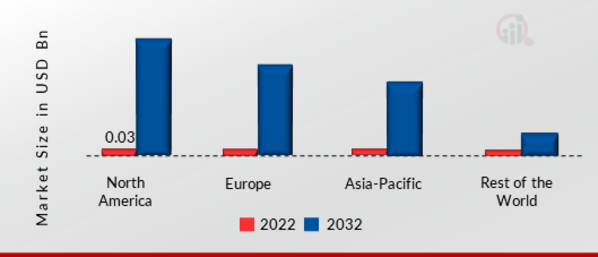Advancements in Technology
Technological advancements play a crucial role in propelling the Global Narrowband IoT Chipset Market Industry forward. Innovations in chipset design and manufacturing processes have led to enhanced performance and reduced power consumption. These improvements enable longer battery life and increased device longevity, which are essential for IoT applications that require continuous connectivity. As technology continues to evolve, the capabilities of narrowband IoT chipsets are expected to expand, allowing for more complex applications and integrations. This ongoing evolution is likely to attract investment and interest from various sectors, further driving market growth.
Market Charts and Projections
Rising Demand for Smart Devices
The increasing proliferation of smart devices is a primary driver for the Global Narrowband IoT Chipset Market Industry. As more consumers adopt smart home technologies, wearables, and connected appliances, the need for efficient communication solutions grows. Narrowband IoT chipsets enable low-power, wide-area connectivity, making them ideal for these applications. In 2024, the market is valued at 0.12 USD Billion, reflecting the initial stages of this trend. By 2035, the market is projected to expand significantly, reaching 11.8 USD Billion, indicating a robust demand trajectory driven by the integration of IoT in everyday life.
Growing Interest in Smart Agriculture
The growing interest in smart agriculture is emerging as a vital driver for the Global Narrowband IoT Chipset Market Industry. Farmers are increasingly adopting IoT solutions to enhance productivity and efficiency in agricultural practices. Narrowband IoT chipsets facilitate real-time monitoring of soil conditions, crop health, and livestock management, thereby optimizing resource usage. This trend is particularly pronounced in regions where agriculture is a primary economic activity. As the market matures, the integration of these technologies is expected to contribute significantly to the projected growth, with a market valuation of 11.8 USD Billion by 2035.
Government Initiatives and Regulations
Government initiatives aimed at promoting IoT adoption are pivotal in shaping the Global Narrowband IoT Chipset Market Industry. Various countries are implementing policies to encourage the development of smart cities and infrastructure, which rely heavily on IoT technologies. For instance, initiatives that support the deployment of narrowband IoT networks facilitate the growth of this market. These regulations not only provide funding but also create a conducive environment for innovation. As a result, the market is expected to witness a compound annual growth rate of 51.76% from 2025 to 2035, driven by supportive governmental frameworks.
Cost-Effectiveness of Narrowband IoT Solutions
The cost-effectiveness of narrowband IoT solutions serves as a significant catalyst for the Global Narrowband IoT Chipset Market Industry. These chipsets offer a low-cost alternative to traditional cellular technologies, making them accessible for a wide range of applications, particularly in developing regions. The ability to connect numerous devices with minimal infrastructure investment enhances their appeal. This economic advantage is likely to attract more businesses to adopt narrowband IoT technologies, further expanding the market. As the industry evolves, the affordability of these solutions could lead to increased penetration in sectors such as agriculture, logistics, and healthcare.





